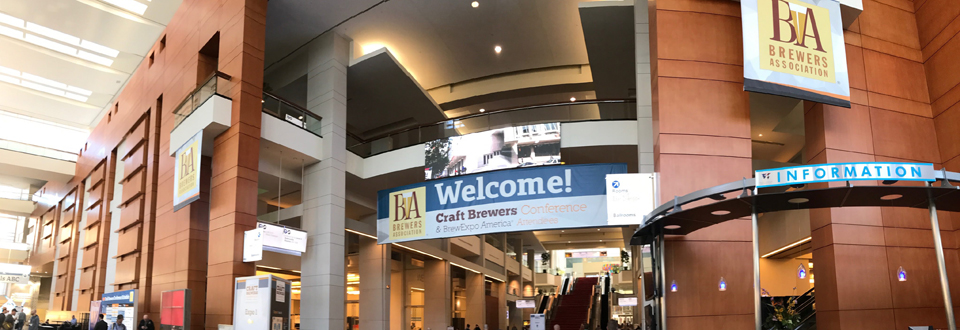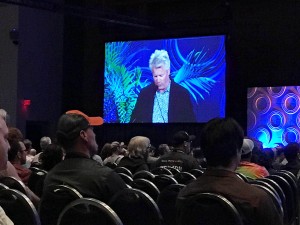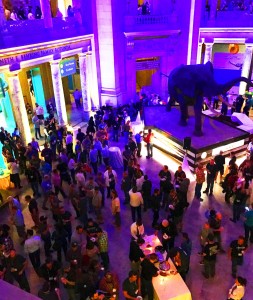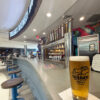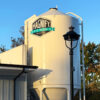On the train back to Philadelphia from the 2017 Brewer’s Association’s “Craft Brewers Conference” (CBC), for the first time since I started attending some eight years ago, I felt a sense of real unease about the state of craft beer.
That unease started when I attended a day one breakout session in the “start up brewery track” called “What I Wish I Knew Before Opening a Brewery: The Good the Bad and the Ugly”” by Davin Helden, an owner of “Liquid Mechanics Brewing Co” of Lafayette Colorado.
Davin opened his brewpub in 2014 and last year sold over 830 barrels and showed a 50% growth rate. That was the good part. Then he told us about a lot of ugly parts:
Dave has an MBA, and quit his job in the chemical industry to pursue his dreams of creating a craft brewery. Dave ended up being on Medicaid for most of the past two years – he was not able to pay himself or other owners of the brewery.
He admitted that he had grossly underestimated his operating expenses, lost $8,000 in glassware in one year, for example. He had thought that his brewery would be the second in his town, but by the time he opened, he was actually the fourth. Worried that he wouldn’t stand out from his competition, he burned through most of the $80,000 of capital put aside for operating expenses by fitting out his tap room to look “better than the competition”.
He told us that he had spent too much on the highest quality brewing equipment, as it turned out that it was hard to get and so it delayed the opening of the pub (and getting the associated revenue). A cheaper version of the brewhouse would have worked just fine.
He then went on to explain that it turned out that he really didn’t really know his customers demographics – for example they had built an outdoor patio but didn’t put in lights as he thought that his customers would come inside at night. Instead when it got dark they left. One day he found a young mom changing her baby on the floor of the bathroom – as he had no changing station for young families. His brewer didn’t want to brew an IPA at the start, and new customers walked out when he didn’t have one on tap at the opening (he now brews three).
That was just the start of his presentation. The next day, unease and discomfort showed again in the “State of the Industry” presentation from the Director of the BA Paul Gatza. He opened his review of 2016 with “Things are changing, there’s more competition than ever…and growth is slowing down, but it’s still out there…” He then talked about the huge influx of new breweries in the craft market and the simultaneous slowing of overall volume growth.
“Today we have 5,300 active breweries, with 826 breweries opening in 2016, and there are 2,000 active permits for new breweries in planning… Two breweries are opening every day”.
“Breweries are understanding that it’s time to reign in the capacity, double digit growth isn’t happening anymore…Just making great beer isn’t enough in 2017, you need the right branding, social media, distribution, capacity planning… to be successful.”
Commenting on the squeeze on regional brewers from smaller more nimble competition below and acquisitions and mergers above, he commented: “Customers do care about small independent brewers, but they often aren’t aware if the beer they are drinking comes from a brewery that was acquired by a macro or an actual independent brewery”.
Bart Watson, the Chief economist of the BA commented on the slowing growth. After increasing sales volumes of 18% in 2013 and 2014, 12% in 2015 and now 6% in 2016 – he stated: “it’s the new normal”. He pointed out that overall craft beer added 1.4 million barrels in 2016 – but that this growth was fractured across many small breweries. He also pointed out that even though over 90 breweries closed in 2016, it was the least by percentage in many years – and then added “but there is more to come”.
To be fair, there were some real bright spots, as brew pubs (up 15% in volume) and micro breweries with tap rooms (up 27%) were growing at a historic rate. “Small is good, local is very good”. It’s not all doom and gloom.
After hearing the BA explaining increased competition and market saturation in a more or less positive note, we had a keynote presentation from Dick Cantwell, retired brewer and long time leader in the brewers association. Dick started Elysian Brewing in 1996 and built up a very popular and successful craft brewery, until it was sold to uber-macro brewer AB-Inbev (Anheuser-Busch) in 2015. (He resigned from the brewery’s management after the acquisition – as it was not his choice to sell). If there was ever an icon of how craft is a maturing and changing, it’s Dick.
The theme of his presentation was the need for renewed unity within the craft brewing industry, and about how critical it was to the industry to stay together as “a tribe” and support each other actively.
“As independent craft brewers we have a common brand and legacy to protect… there is an unfortunate trend to mistrust experience” he opined.
“The sharing of resources and techniques are the secret to our success. Large brewers and other industries think ideas are to be purchased and protected, we think ideas are for everyone”.
He spoke openly about worrying that the newest brewers that didn’t understand or care about the heritage of the older brewers that blazed the trail and originated the experimentation that is the soul of craft. “Older brewers (Fritz Maytag, etc) said that if they knew how difficult it would be and how expensive it would be they wouldn’t have done it at all.”
He worried about a new breed of brewers that think of the BA and supporting the industry as “just politics”. He urged all craft brewers large and small, new and old to pull together.
Much of this year’s conference featured other sessions about the tribulations of starting up a brewery – how to get funding, the use of digital marketing, the perils of distribution and running afoul of the TTB
Not all of the sessions were of the “warning” theme, but many of them truly seemed to be channeling a wariness I had not seen so much before.
Perhaps the takeaway from the conference for me was: Yes we are getting big, generally healthy and still growing, but at this time for the industry we need to be wary and take care of each other – or there will be consequences. “It’s the new normal” for a maturing industry. And as Paul Gatza felt compelled to remind us in his state of the industry presentation “beer is fun and if you don’t feel that way, maybe you should think about getting out of the business”. Sometimes we can forget that, so I will go and ease my discomfort with a fine crisp craft beer – or maybe two.


